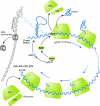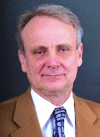Synthetic biology: discovering new worlds and new words
- PMID: 18724274
- PMCID: PMC2529360
- DOI: 10.1038/embor.2008.159
Synthetic biology: discovering new worlds and new words
Figures




References
-
- Arkin A (2008) Setting the standard in synthetic biology. Nat Biotechnol 26: 771–774 - PubMed
-
- Baker D, Church G, Collins J, Endy D, Jacobson J, Keasling J, Modrich P, Smolke C, Weiss R (2006) Engineering life: building a fab for biology. Sci Am 294: 44–51 - PubMed
-
- Canton B, Labno A, Endy D (2008) Refinement and standardization of synthetic biological parts and devices. Nat Biotechnol 26: 787–793 - PubMed
MeSH terms
LinkOut - more resources
Full Text Sources
Other Literature Sources

